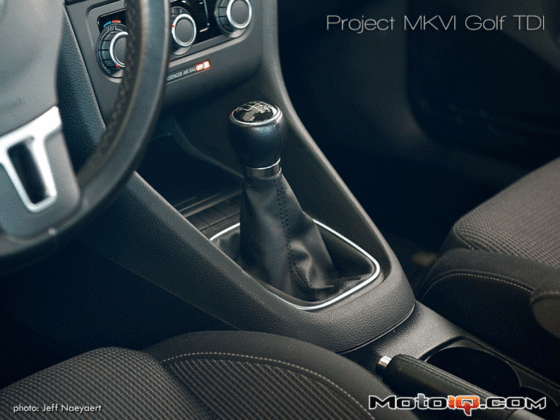,

 Sasha Anis isn’t just some random iPad app developer, he’s a two-time Canadian Touring Car Champion, having built and fine-tuned the Hyundai Genesis coupe he won his most recent championship in, giving Hyundai their first ever pro level racing championship in the process. He’s also built one of the most powerful naturally-aspirated VQ-powered Nissan 350Z’s on the planet, is a widely respected ECU tuner, and knows which way to turn the knobs to make racecars go faster.
Sasha Anis isn’t just some random iPad app developer, he’s a two-time Canadian Touring Car Champion, having built and fine-tuned the Hyundai Genesis coupe he won his most recent championship in, giving Hyundai their first ever pro level racing championship in the process. He’s also built one of the most powerful naturally-aspirated VQ-powered Nissan 350Z’s on the planet, is a widely respected ECU tuner, and knows which way to turn the knobs to make racecars go faster.Laptimizer took them a couple of years to develop in partnership with MobilityGo Inc, and as Sasha put it, “It really started to turn into something awesome in the last few months of its development process, at which point I started using prototype versions during the 2013 Grand Am season [on the CKS Autosport GS class Camaro he was the Crew Chief for], at which point we finally launched the app when it was polished enough for the end user.”
Speaking of end users, Laptimizer has only been available for purchase since July 2013 and it’s already being used by a number of pro race teams. Andrew Bordin from AIM Autosport has taken a keen interest in the app, he and his crew using it to dial in their IMSA Tudor USC Ferraris, and Mad Mike Whiddett’s New Zealand based drift team from Townsend Brotherz Racing are also actively using the app, but as you’ll see it’s extremely easy to use and thus perfectly suited to weekend warriors like you and me.

 Kaz from TBR was kind enough to send us a few snaps of his crew using Laptimizer on Mad Mike’s D1NZ 4-rotor ‘Madbul’ FD RX-7. According to Kaz, “Laptimizer has been amazing. It simplifies everything about data logging. It’s an awesome piece of simplified technology that anyone can use. We will do our best to spread the word and support Laptimizer!“
Kaz from TBR was kind enough to send us a few snaps of his crew using Laptimizer on Mad Mike’s D1NZ 4-rotor ‘Madbul’ FD RX-7. According to Kaz, “Laptimizer has been amazing. It simplifies everything about data logging. It’s an awesome piece of simplified technology that anyone can use. We will do our best to spread the word and support Laptimizer!“Generally speaking, I’m of the opinion that reading instructions is for cowards, but the first thing I did when I fired up Laptimizer on my iPad was read the Setup Guide. Turns out this was a great place to start, because it’s a veritable treasure trove of information on chassis and suspension setup including very clear guidelines about how to interpret the data you’re collecting so that you make adjustments in the right direction during testing. And hey, even if you go in the wrong direction, with proper race notes like Laptimizer helps you make, it’ll be quick and easy to revert to the last-best setup.
 The Setup Guide alone is well worth the $7.99 for the ‘Lite’ version of the app, especially if you’re new to this kind of data collection and interpretation. If you get serious about collecting detailed notes on more than a couple cars, then upgrading to the ‘Pro’ version for another $8.99 makes good sense. The way I look at it, if you’ve already spent hundreds of dollars on a lap timer/in-car data acquisition system, a tire pyrometer, toe plates, and a camber gauge, spending less than $20 on an iPad app that’ll help you keep accurate and detailed notes in a centralized and digital (and thus easily downloaded/uploaded) format is the definition of a no-brainer.
The Setup Guide alone is well worth the $7.99 for the ‘Lite’ version of the app, especially if you’re new to this kind of data collection and interpretation. If you get serious about collecting detailed notes on more than a couple cars, then upgrading to the ‘Pro’ version for another $8.99 makes good sense. The way I look at it, if you’ve already spent hundreds of dollars on a lap timer/in-car data acquisition system, a tire pyrometer, toe plates, and a camber gauge, spending less than $20 on an iPad app that’ll help you keep accurate and detailed notes in a centralized and digital (and thus easily downloaded/uploaded) format is the definition of a no-brainer.The first step to using Laptimizer for data input and organization is setting up a profile. This is a straightforward process, where you specify the name on the profile as well as some details about the vehicle in use. You can customize each profile to include as much or as little information as you’d like, using the Configuration screen where simple on/off sliders let you select what types of data you want to make note of.

 As you can see, I’ve got three profiles setup so far, and I’ve configured each one a little differently based on the available data sources from each vehicle. Changing the configuration is as simple as sliding the on/off toggles on each of the setup pages (column tabs on the far left of the Configuration screen). This takes a bit of time to go through, but by turning off data options you don’t want or need, you’ll end up with clean and concise reports.
As you can see, I’ve got three profiles setup so far, and I’ve configured each one a little differently based on the available data sources from each vehicle. Changing the configuration is as simple as sliding the on/off toggles on each of the setup pages (column tabs on the far left of the Configuration screen). This takes a bit of time to go through, but by turning off data options you don’t want or need, you’ll end up with clean and concise reports.Within each profile you then have an Event tab and a Session tab, which makes it easy to navigate to the test sessions from a specific day. As an example, I did some testing of the new BFGoodrich Rival extreme performance summer tire back in August on a lightly modded Scion FR-S (17×8’’ TSW Interlagos RF wheels, single adjustable Mann Engineering coilovers, and Hawk DTC-30 brake pads), and I just e-mailed myself the PDF report below from Laptimizer. Certainly a lot better organized and professional looking than my collection of illegible notes in that smelly, old duffle bag!



